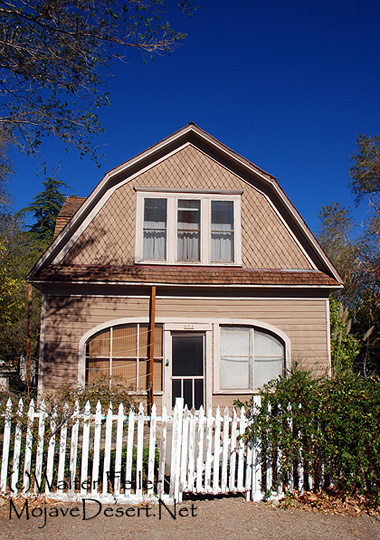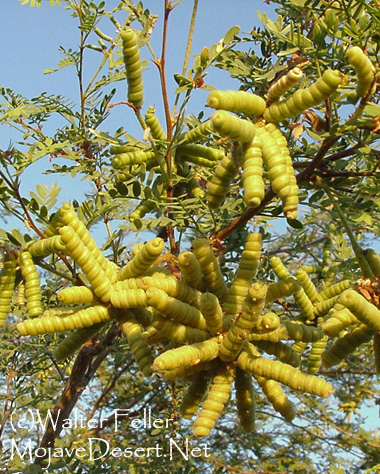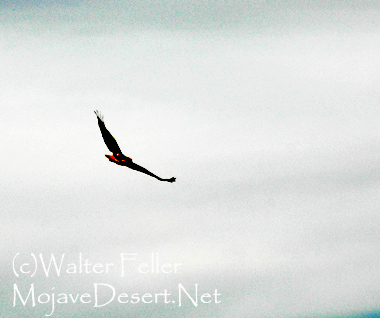My Neighbor's Field
It is one of those places God must have meant for a field from all time, lying very level at the foot of the slope that crowds up against Kearsarge, falling slightly toward the town. North and south it is fenced by low old glacial ridges, boulder strewn and untenable. Eastward it butts on orchard closes and the village gardens, brimming over into them by wild brier and creeping grass. The village street, with its double row of unlike houses, breaks off abruptly at the edge of the field in a footpath that goes up the streamside, beyond it, to the source of waters.The field is not greatly esteemed of the town, not being put to the plough nor affording firewood, but breeding all manner of wild seeds that go down in the irrigating ditches to come up as weeds in the gardens and grass plots. But when I had no more than seen it in the charm of its spring smiling, I knew I should have no peace until I had bought ground and built me a house beside it, with a little wicket to go in and out at all hours, as afterward came about.
Edswick, Roeder, Connor, and Ruffin owned the field before it fell to my neighbor. But before that the Paiutes, mesne lords of the soil, made a campoodie by the rill of Pine Creek; and after, contesting the soil with them, cattle-men, who found its foodful pastures greatly to their advantage; and bands of blethering flocks shepherded by wild, hairy men of little speech, who attested their rights to the feeding ground with their long staves upon each other's skulls. Edswick homesteaded the field about the time the wild tide of mining life was roaring and rioting up Kearsarge, and where the village now stands built a stone hut, with loopholes to make good his claim against cattlemen or Indians. But Edswick died and Roeder became master of the field. Roeder owned cattle on a thousand hills, and made it a recruiting ground for his bellowing herds before beginning the long drive to market across a shifty desert. He kept the field fifteen years, and afterward falling into difficulties, put it out as security against certain sums. Connor, who held the securities, was cleverer than Roeder and not so busy. The money fell due the winter of the Big Snow, when all the trails were forty feet under drifts, and Roeder was away in San Francisco selling his cattle. At the set time Connor took the law by the forelock and was adjudged possession of the field. Eighteen days later Roeder arrived on snowshoes, both feet frozen, and the money in his pack. In the long suit at law ensuing, the field fell to Ruffin, that clever one-armed lawyer with the tongue to wile a bird out of the bush, Connor's counsel, and was sold by him to my neighbor, whom from envying his possession I call Naboth.
Curiously, all this human occupancy of greed and mischief left no mark on the field, but the Indians did, and the unthinking sheep. Round its corners children pick up chipped arrow points of obsidian, scattered through it are kitchen middens and pits of old sweat-houses. By the south corner, where the campoodie stood, is a single shrub of "hoopee" ( Lycium andersonii ), maintaining itself hardly among alien shrubs, and near by, three low rakish trees of hackberry, so far from home that no prying of mine has been able to find another in any canon east or west. But the berries of both were food for the Paiutes, eagerly sought and traded for as far south as Shoshone Land. By the fork of the creek where the shepherds camp is a single clump of mesquite of the variety called "screw bean." The seed must have shaken there from some sheep's coat, for this is not the habitat of mesquite, and except for other single shrubs at sheep camps, none grows freely for a hundred and fifty miles south or east.
Naboth has put a fence about the best of the field, but neither the Indians nor the shepherds can quite forego it. They make camp and build their wattled huts about the borders of it, and no doubt they have some sense of home in its familiar aspect.
As I have said, it is a low-lying field, between the mesa and the town, with no hillocks in it, but a gentle swale where the waste water of the creek goes down to certain farms, and the hackberry-trees, of which the tallest might be three times the height of a man, are the tallest things in it. A mile up from the water gate that turns the creek into supply pipes for the town, begins a row of long-leaved pines, threading the watercourse to the foot of Kearsarge. These are the pines that puzzle the local botanist, not easily determined, and unrelated to other conifers of the Sierra slope; the same pines of which the Indians relate a legend mixed of brotherliness and the retribution of God. Once the pines possessed the field, as the worn stumps of them along the streamside show, and it would seem their secret purpose to regain their old footing. Now and then some seedling escapes the devastating sheep a rod or two down-stream. Since I came to live by the field one of these has tiptoed above the gully of the creek, beckoning the procession from the hills, as if in fact they would make back toward that skyward-pointing finger of granite on the opposite range, from which, according to the legend, when they were bad Indians and it a great chief, they ran away. This year the summer floods brought the round, brown, fruitful cones to my very door, and I look, if I live long enough, to see them come up greenly in my neighbor's field.
It is interesting to watch this retaking of old ground by the wild plants, banished by human use. Since Naboth drew his fence about the field and restricted it to a few wild-eyed steers, halting between the hills and the shambles, many old habitues of the field have come back to their haunts. The willow and brown birch, long ago cut off by the Indians for wattles, have come back to the streamside, slender and virginal in their spring greenness, and leaving long stretches of the brown water open to the sky. In stony places where no grass grows, wild olives sprawl; close-twigged, blue-gray patches in winter, more translucent greenish gold in spring than any aureole. Along with willow and birch and brier, the clematis, that shyest plant of water borders, slips down season by season to within a hundred yards of the village street. Convinced after three years that it would come no nearer, we spent time fruitlessly pulling up roots to plant in the garden. All this while, when no coaxing or care prevailed upon any transplanted slip to grow, one was coming up silently outside the fence near the wicket, coiling so secretly in the rabbit-brush that its presence was never suspected until it flowered delicately along its twining length. The horehound comes through the fence and under it, shouldering the pickets off the railings; the brier rose mines under the horehound; and no care, though I own I am not a close weeder, keeps the small pale moons of the primrose from rising to the night moth under my apple-trees. The first summer in the new place, a clump of cypripediums came up by the irrigating ditch at the bottom of the lawn. But the clematis will not come inside, nor the wild almond.
I have forgotten to find out, though I meant to, whether the wild almond grew in that country where Moses kept the flocks of his father-in-law, but if so one can account for the burning bush. It comes upon one with a flame-burst as of revelation; little hard red buds on leafless twigs, swelling unnoticeably, then one, two, or three strong suns, and from tip to tip one soft fiery glow, whispering with bees as a singing flame. A twig of finger size will be furred to the thickness of one's wrist by pink five-petaled bloom, so close that only the blunt-faced wild bees find their way in it. In this latitude late frosts cut off the hope of fruit too often for the wild almond to multiply greatly, but the spiny, tap-rooted shrubs are resistant to most plant evils.
It is not easy always to be attentive to the maturing of wild fruit. Plants are so unobtrusive in their material processes, and always at the significant moment some other bloom has reached its perfect hour. One can never fix the precise moment when the rosy tint the field has from the wild almond passes into the inspiring blue of lupines. One notices here and there a spike of bloom, and a day later the whole field royal and ruffling lightly to the wind. Part of the charm of the lupine is the continual stir of its plumes to airs not suspected otherwhere. Go and stand by any crown of bloom and the tall stalks do but rock a little as for drowsiness, but look off across the field, and on the stillest days there is always a trepidation in the purple patches.
From midsummer until frost the prevailing note of the field is clear gold, passing into the rusty tone of bigelovia going into a decline, a succession of color schemes more admirably managed than the transformation scene at the theatre. Under my window a colony of cleome made a soft web of bloom that drew me every morning for a long still time; and one day I discovered that I was looking into a rare fretwork of fawn and straw colored twigs from which both bloom and leaf had gone, and I could not say if it had been for a matter of weeks or days. The time to plant cucumbers and set out cabbages may be set down in the almanac, but never seed-time nor blossom in Naboth's field.
Certain winged and mailed denizens of the field seem to reach their heyday along with the plants they most affect. In June the leaning towers of the white milkweed are jeweled over with red and gold beetles, climbing dizzily. This is that milkweed from whose stems the Indians flayed fibre to make snares for small game, but what use the beetles put it to except for a displaying ground for their gay coats, I could never discover. The white butterfly crop comes on with the bigelovia bloom, and on warm mornings makes an airy twinkling all across the field. In September young linnets grow out of the rabbit-brush in the night. All the nests discoverable in the neighboring orchards will not account for the numbers of them. Somewhere, by the same secret process by which the field matures a million more seeds than it needs, it is maturing red-hooded linnets for their devouring. All the purlieus of bigelovia and artemisia are noisy with them for a month. Suddenly as they come as suddenly go the fly-by-nights, that pitch and toss on dusky barred wings above the field of summer twilights. Never one of these nighthawks will you see after linnet time, though the hurtle of their wings makes a pleasant sound across the dusk in their season.
For two summers a great red-tailed hawk has visited the field every afternoon between three and four o'clock, swooping and soaring with the airs of a gentleman adventurer. What he finds there is chiefly conjectured, so secretive are the little people of Naboth's field. Only when leaves fall and the light is low and slant, one sees the long clean flanks of the jackrabbits, leaping like small deer, and of late afternoons little cotton-tails scamper in the runways. But the most one sees of the burrowers, gophers, and mice is the fresh earthwork of their newly opened doors, or the pitiful small shreds the butcher-bird hangs on spiny shrubs.
It is a still field, this of my neighbor's, though so busy, and admirably compounded for variety and pleasantness, — a little sand, a little loam, a grassy plot, a stony rise or two, a full brown stream, a little touch of humanness, a footpath trodden out by moccasins. Naboth expects to make town lots of it and his fortune in one and the same day; but when I take the trail to talk with old Seyavi at the campoodie, it occurs to me that though the field may serve a good turn in those days it will hardly be happier. No, certainly not happier.
 The Mary Austin house
The Mary Austin house Screwbean mesquite
Screwbean mesquite Hawk
Hawk